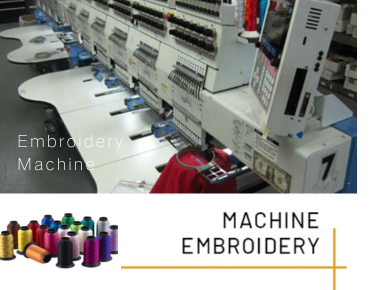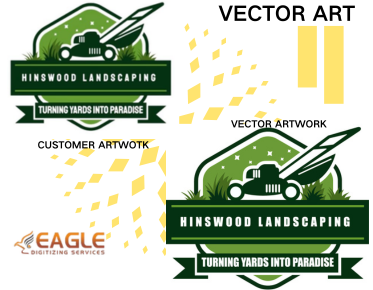Popular Embroidery Fabric Types for Machine Embroidery
Embroidery is a timeless art form that has evolved significantly with the advent of machine embroidery. The choice of fabric plays a crucial role in the final outcome of an embroidery project. Different fabrics offer unique textures, durability, and aesthetic appeal, making them suitable for various types of embroidery designs. In this blog, we will explore some of the most popular fabric types used in machine embroidery and discuss their characteristics and applications.
Cotton: The Versatile Classic
Cotton is one of the most commonly used fabrics in embroidery due to its versatility and ease of use. It is a natural fiber that is soft, breathable, and highly absorbent, making it ideal for a wide range of embroidery projects. Cotton fabrics are available in various weights and weaves, such as muslin, calico, and canvas, each offering different textures and finishes. This fabric is particularly popular for creating embroidery designs on garments, home décor items, and accessories.
Linen: The Elegant Choice
Linen is another natural fabric that is favored for its elegant appearance and durability. It has a distinct texture and a natural luster that adds a touch of sophistication to embroidery projects. Linen is particularly suitable for heirloom embroidery, table linens, and decorative items. Its strength and ability to hold intricate designs make it a preferred choice for detailed embroidery work.
Silk: The Luxurious Option
Silk is synonymous with luxury and is often used for high-end embroidery projects. Its smooth texture and natural sheen enhance the beauty of embroidered designs, making them stand out. Silk fabrics are delicate and require careful handling, but the results are worth the effort. This fabric is ideal for creating elegant garments, accessories, and decorative pieces that exude opulence.
Polyester: The Durable Alternative
Polyester is a synthetic fabric that is known for its durability and resistance to wrinkles and shrinkage. It is an excellent choice for embroidery projects that require frequent washing or exposure to the elements. Polyester fabrics are available in a wide range of colors and finishes, making them versatile for various applications. They are commonly used for creating sportswear, uniforms, and outdoor gear.
Denim: The Trendy Fabric
Denim is a sturdy fabric that has gained popularity in the world of embroidery for its trendy and casual appeal. It is perfect for creating bold and eye-catching designs on jackets, jeans, and bags. Denim's thick texture provides a stable base for embroidery, allowing for intricate and detailed designs. This fabric is a favorite among fashion enthusiasts looking to add a personalized touch to their wardrobe.
Felt: The Crafty Choice
Felt is a non-woven fabric that is made by matting fibers together. It is a popular choice for craft projects and is often used in applique and decorative embroidery. Felt is available in a variety of colors and thicknesses, making it suitable for creating playful and whimsical designs. Its soft texture and ease of use make it a favorite among beginners and experienced embroiderers alike.
Organza: The Delicate Fabric
Organza is a lightweight and sheer fabric that is often used for delicate and intricate embroidery designs. Its transparent nature allows for creative layering and embellishments, making it ideal for bridal wear, evening gowns, and decorative accessories. Organza's delicate appearance adds a touch of elegance and sophistication to any embroidery project.
Choosing the Right Fabric for Your Project
When selecting a fabric for your embroidery project, it is important to consider the design, intended use, and personal preferences. Each fabric type offers unique characteristics that can enhance the overall look and feel of the embroidery. By understanding the properties of different fabrics, you can make informed decisions and achieve the desired results in your embroidery projects.
Embroidery Digitizing: Enhancing Fabric Selection
Embroidery digitizing plays a crucial role in the success of machine embroidery projects. Companies like Eagle Digitizing offer professional embroidery digitizing services that ensure designs are accurately translated onto fabric. Their expertise in digitizing helps minimize thread breakage and ensures smooth sew-outs, regardless of the fabric type used.
Future Trends in Embroidery Fabrics
As technology continues to advance, we can expect to see new and innovative fabrics being introduced to the world of embroidery. Sustainable and eco-friendly fabrics are gaining popularity, offering environmentally conscious options for embroiderers. Additionally, smart fabrics with integrated technology are opening up new possibilities for interactive and functional embroidery designs. The future of embroidery fabrics is exciting, with endless opportunities for creativity and innovation.
In conclusion, the choice of fabric is a fundamental aspect of any embroidery project. By understanding the characteristics and applications of different fabrics, you can elevate your embroidery work and create stunning designs that stand the test of time. Whether you prefer the classic appeal of cotton, the elegance of linen, or the luxury of silk, there is a fabric out there to suit every embroidery need.



